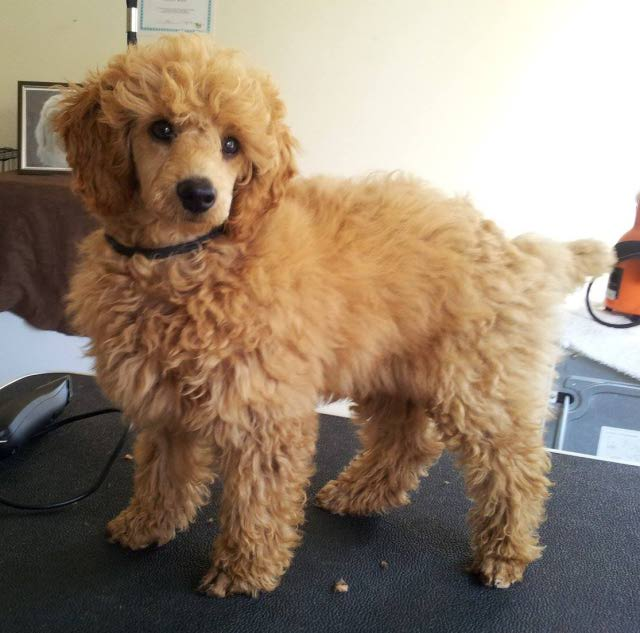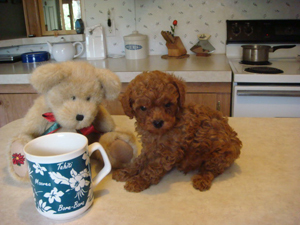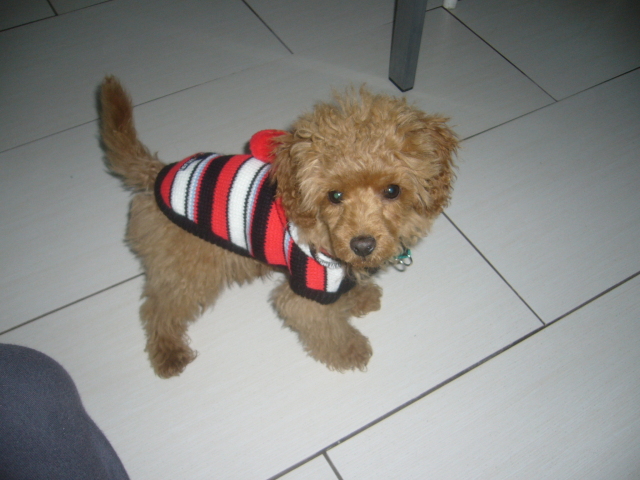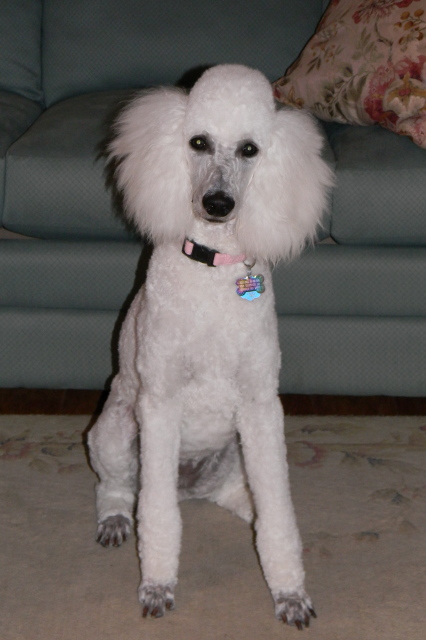QuestionI have a 2 year old male poodle that has not been fixed that will chase our cats and corner them. Poodle is new to the family and has really adjusted well but has a problem with the cats. Dog has accepted all other pets in house. Any thoughts of how to stop agression torwards cats?
AnswerThis is a tough one I was tempted to skip answering. Not every situation has a good solution. I don't think you will be able to leave them alone together. Crating the dog when away may be the best solution. It is only natural that a puppy resists its crate at first. What the puppy wants more than anything else is to be others, you, anyone else in the household, and any other pets. In our modern society, even if we are home, other things distract us from the attention an uncrated puppy must have. The only real solution is to crate the dog when you aren't around. The dog may be happier in its den than loose in the house. It relaxes, it feels safe in its den. It rests, the body slows down reducing the need for water and relieving its self. Dogs that have been crated all along do very well. Many of them will rest in their crates even when the door is open. I think the plastic ones give the dog more of a safe, enclosed den feeling. Metal ones can be put in a corner or covered with something the dog can't pull in and chew. Select a crate just big enough for the full grown dog to stretch out in.
Leave it some toys. Perhaps a Kong filled with peanut butter. Don't leave anything in the crate the dog might chew up. It will do fine without even any bedding. You will come home to a safe dog and a house you can enjoy.
A dog that has not been crated since it was little, may take some work. Start out just putting its toys and treats in the crate. Praise it for going in. Feed it in the crate. This is also an easy way to maintain order at feeding time for more than one dog.
The "shut the puppy in a safe room" is a fallacy. Very few houses even have a safe room. How many of us have a room with a hard surfaced floor and nothing else? Most rooms have electrical cords to chew if nothing else. In addition to destroying anything a bored puppy finds to chew, it may choke or have intestinal blockage from the pieces. I had a friend that left her dog in a "safe" room. It ate a hole in the floor covering. The safe rooms fail to give the dog the comfort of the enclosed space their instinct requires. Nor do they restrict activity extending the time the dog can go without relieving itself.
The key to most behavior problems is approaching things using the dog's natural instincts. Dogs see all the people and dogs in the household as a pack with each having their own rank in the pack and a top dog. Life is much easier if the 2 legged pack members outrank the 4 legged ones. You can learn to play the role of top dog by reading some books or going to a good obedience class. A good obedience class or book is about you being top dog, not about rewarding standard commands with a treat. Start at http://www.dogsbestfriend.com/ For more on being top dog, see http://www.dogbreedinfo.com./topdogrules.htm
Once you are in place as top dog, correcting it for chasing the cats will be more effective. When you are watching it, immediately correct it as soon as it goes for the cats, or anything else except its own toys. In a quiet, but firm voice give it an ''Ah, ah, ah!'' and offer it a toy.

 Precious Yorki Poo Coat
Question
PJ
Hello,
I have an 8 month old Yorkie poo. Re
Precious Yorki Poo Coat
Question
PJ
Hello,
I have an 8 month old Yorkie poo. Re
 5 month Miniature Poodle
Question
Photo
Hi there - we have Barney, 5mth o
5 month Miniature Poodle
Question
Photo
Hi there - we have Barney, 5mth o
 Fading
Question
red maltipoo
Hi, Im going to be getting a dark
Fading
Question
red maltipoo
Hi, Im going to be getting a dark
 toy poodle weight
Questiontommy
QUESTION: Hello
I have a 4 month t
toy poodle weight
Questiontommy
QUESTION: Hello
I have a 4 month t
 skittish about new things
Question
female standard poodl
We got our female stand
skittish about new things
Question
female standard poodl
We got our female stand